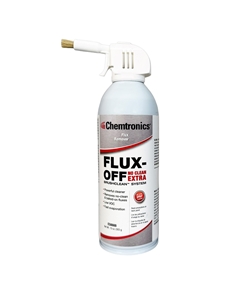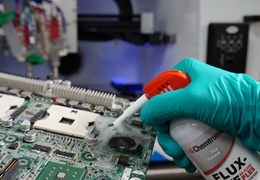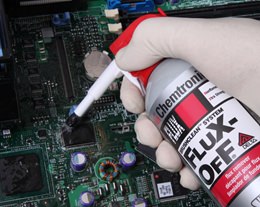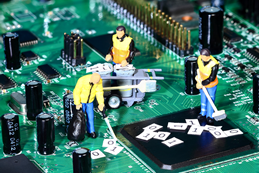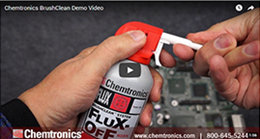Flux-Off No Clean EXTRA
Low VOC extra-strength flux remover for cleaning no-clean flux
Flux-Off No Clean EXTRA Flux Remover is a low VOC extra strength solvent that removes light or heavy encrusted flux deposits. The high pressure aerosol penetrates quickly to remove most types of fluxes, oxide particles, dust, grease and oil, then evaporates quickly leaving no residues.
Available with The BrushClean™ System - Gentle scrubbing action of a brush combined with high performance flux remover. Click here for more information.
Features & Benefits
- Powerful cleaner removes no-clean fluxes
- Low VOC
- Non-corrosive, safe for metals
- Flammable
- Extra-strength
- Fast drying
- Removes encrusted, baked-on fluxes
- All-Way Spray valve — even sprays upside down
- Includes BrushClean System

